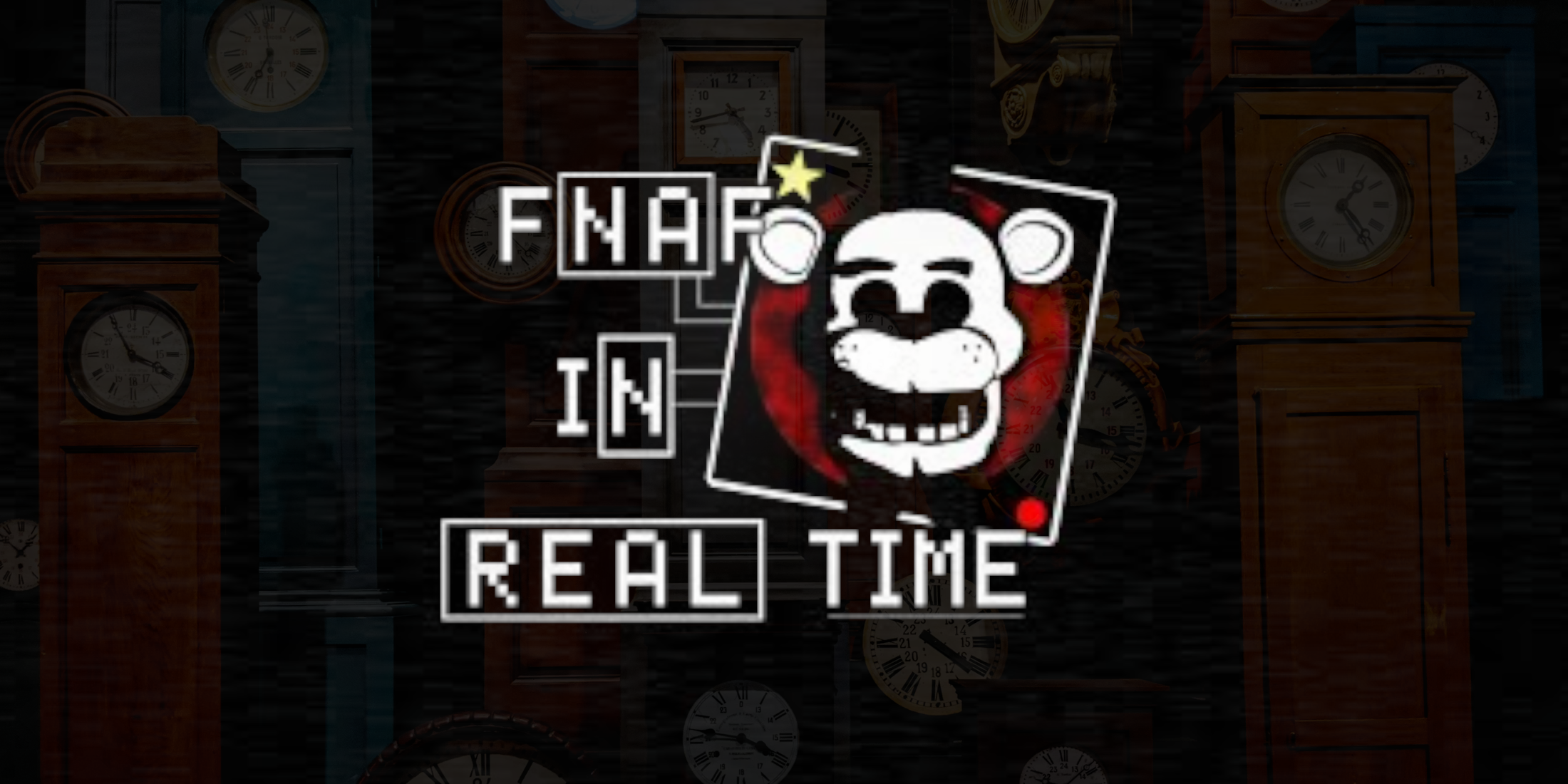The Five Nights At Freddy’s franchise is in a weird spot at the moment. Once held up as the ultimate indie game Cinderella story, the reveal of the creator’s right-wing views, a load of buggy and poorly-received sequels, and a messy transition into other mediums have taken the sheen off the franchise. This has only been made worse by the public becoming quickly burnt out by the glut of rushed and derivative mascot horror games that tried to follow in its footsteps.
However, despite all this, the series maintains a massive fan community that constantly produces new projects based on or inspired by every part of the now-massive franchise. One such project is Five Nights At Freddy’s: In Real Time, a fan game that aims to be a fully animated version of the first FNAF game.
So, rather than having the various animatronics teleport from location to location as they did in the original Clickteam games, the player can watch as they lumber around the decaying restaurant in their never-ending quest to give you a good kicking.
Freddy Brings Fazbear Friction
Five Nights At Freddy’s: In Real Time Raises The Base Game’s Friction

While this is an interesting idea in its own right, the bonus 6-Hour mode has quickly captured the internet’s imagination and become the game’s most talked-about element. In the original FNAF, you were tasked with surviving from midnight to 6 AM at the titular bear-themed pizza joint. However, each night only lasted 8 minutes and 55 seconds, with each hour passing in a measly 89 seconds. As you can likely guess from the name, Five Nights At Freddy’s: In Real Time’s 6-Hour Mode removes this time compression, so an in-game hour lasts for one real-world hour, meaning each night takes six hours to complete.
For context, this means that in the time it takes to finish one night in this mode, you could beat the main story of Sonic Mania or go through the original Portal twice. You could even complete a double bill of Avengers: Infinity War and Avengers: Endgame with enough spare time to make a cocktail and microwave a bag of popcorn between the two movies. Whatever way you look at it, a single night of 6-hour mode is a massive commitment.
Before we go forward, it should be noted that the complete game isn’t out yet. But, the studio has released a demo version that lets you play through the first night, which is enough to get a feel for how the 6-hour mode plays.
One of the most fascinating things about Five Nights At Freddy’s: In Real Time’s 6-hour mode is the friction it adds to the overall experience. A big reason for the original Five Nights At Freddy’s success was that it didn’t hold the player’s hand and threw them into the deep end with little to no help. While the basic controls (looking around, flipping through your cameras, closing the doors) are intuitive and easy to grasp, working out how each animatronic functions and what you need to do to keep them from defeating you is never fully explained in-game, forcing players to rely on trial and error to work out how to keep the animatronics away without depleting their power reserves before the night ends.
The Five Nights At Freddy’s: In Real Time 6-hour mode only magnifies this, as while the game’s mechanics (like animatronic movement speed and power drain) have been tweaked to account for the longer night, the player still has to play cautiously as bad power management or one wrong move could still spell their doom.
The Player’s Own Body Is The Game’s Newest Foe
However, the longer night duration means the player must also deal with a new foe, their mind. Staying intensely focused on a task for ten minutes isn’t hard, especially with constant mental stimulation. But maintaining that focus for 6 hours non-stop is a much trickier task. In fact, studies using sustained attention tasks have frequently shown that focus and task performance quickly diminish over an hour, even if external motivations are introduced mid-way through the task. This means that, as the night continues, the player is more likely to get distracted or have their mind wander. This distraction could cause them to overlook something or make a mistake, leading to their swift end at Freddy’s hands, massively increasing the night’s difficulty.
Due to this, the latter half of the night is a slowly amplifying spiral of stress, as the player becomes increasingly aware that each minute brings them closer to the end, while also meaning that it’s one more minute they’ll need to re-do if they fail. This stress makes it more likely that the player will mess up, meaning that 6-hour mode is a painfully tricky and uniquely player-unfriendly challenge.
The True Horror Is Capitalism (What A Surprise!)
Five Nights At Freddy’s: In Real Time Spotlights The Horror That The Main Franchise Has Left Behind

Another thing the Five Nights At Freddy’s: In Real Time 6-Hour mode does is amplify the Capitalist horror that lurks beneath the surface of the original FNAF, bringing it to the forefront in a way both the original game and the later installments failed to do.
At its core, FNAF 1 (before it got sucked into the never-ending lore vortex) is a tale of a minimum wage worker being exploited by a heartless employer who doesn’t care for their safety, comfort, or dignity. While later games have retained the idea of Fazbear Entertainment being a terrible employer, it’s been amplified to the point of farce, with the modern games having them be mustache-twirling Snidely Whiplash types who do comically evil things for fun, removing the grit and relatability that made the original game so fascinating.
But in Five Nights At Freddy’s: In Real Time’s 6-Hour Mode, this part of the game’s atmosphere becomes inescapable, forming a crushing malaise that few other games have been able to evoke. The main reason is that the increased time between animatronic furry attacks gives the player more time to take in the game’s often-overlooked details.
The player’s office is the best example of this. While it’s clearly not a welcoming space, the longer the player looks at it, the grimmer and more depressing it becomes. Every inch of the room screams that this space was designed to prioritize function over comfort, never considering the employee or their needs. Even safety was obviously an afterthought, as shown by the tangled web of grubby wires that dangle around your precariously stacked monitors.
After several minutes, you’ll feel this vibe of corporate exploitation radiating from every inch of the space. A great example is the children’s drawings stuck to the wall. At first, they seem like a splash of color in the otherwise plain room. But as the player looks at them more and takes in how disgusting the room is, it becomes easy to imagine a member of Fazbear management pointing at these drawings whenever a staff member complains, asking if they want to “upset the children” by making a fuss about their low wages or the building’s general lack of safety precautions. Effectively making these drawings, Fazbear’s take on the classic “in this workplace we’re a family” line that causes everyone who has experienced minimum wage work to cringe so hard it feels like their eyes are about to pop out of their skull.
Longer Nights Mean More Tension And More Waiting

On top of this, the longer night length enhances the ebb and flow that makes the game work so well. It is a widely accepted rule in horror that a project (be it a movie, game, or haunted house) needs slower and quieter moments to build tension because this tension enhances the scares when they happen. In Five Nights At Freddy’s: In Real Time’s 6-hour mode, the player will endure many minutes of nothing, where the animatronics are either not moving or are far enough away to not be a threat. During these moments, the game is mostly silent, which massively ups the atmosphere and makes the moments where the player has to quickly respond to incoming robot attacks all the more harrowing.
Plus, the wait time gives the player time to wonder why their character is stuck in the hellish situation they find themselves in. What exactly leads to someone returning to this terrible job day after day, even when they know that it will likely spell their doom? If Freddy Fazbear hammering at your doors is your best option, then your other options must be painfully grim, a thought that only makes the atmosphere and Fazbear’s lack of care all the more painful.
Making The Ending Even Less Of A Reward

In the final game, the previously mentioned elements will work in tandem to dramatically enhance one of the best bits of black humor in videogame history. In the original FNAF, when the player completes the fifth night, they are awarded a paycheque for a measly $120. This cheque perfectly encapsulates how little Fazbear cares about its employees, even those who put their bodies on the line for the company. This moment is massively impactful because it subverts player expectations, as most players who went into the game blind likely presumed that beating the final night would lead to a special cutscene or a cool unlock. Thus, this moment allows the player to viscerally experience how insulting it feels to be presented with such a pittance after hours of struggle.
Five Nights At Freddy’s: In Real Time 6-hour mode is a fascinating and oddly mesmerizing slice of game design. The game takes the friction already present in the original FNAF and turns it up to eleven, creating an experience as immersive as it is daunting. Due to the 6-hour mode’s overt player hostility, it’s hard to describe the game as fun in the traditional sense. Due to the 6-hour mode’s overt player hostility, it’s hard to describe the game as fun in the traditional sense. But due to the game’s atmosphere and generally oppressive visual style, this hostility works really well, creating an immersive and emotional experience that captures the atmospheric detail that made the original Five Nights At Freddy’s so compelling, its grimy atmosphere dripping with the horror of capitalist exploitation. Something scarier than any rejected Chuck E. Cheese animatronic.


